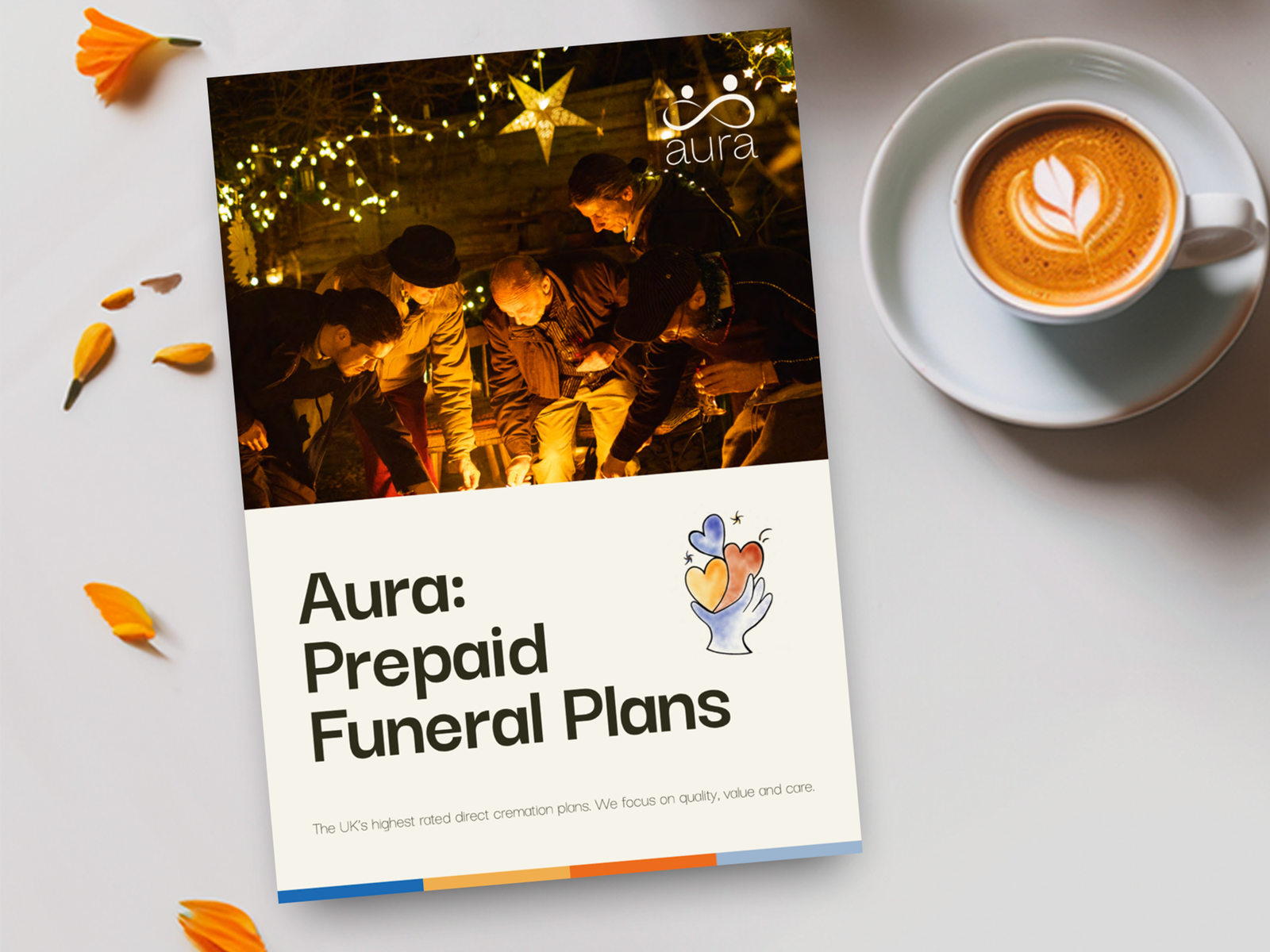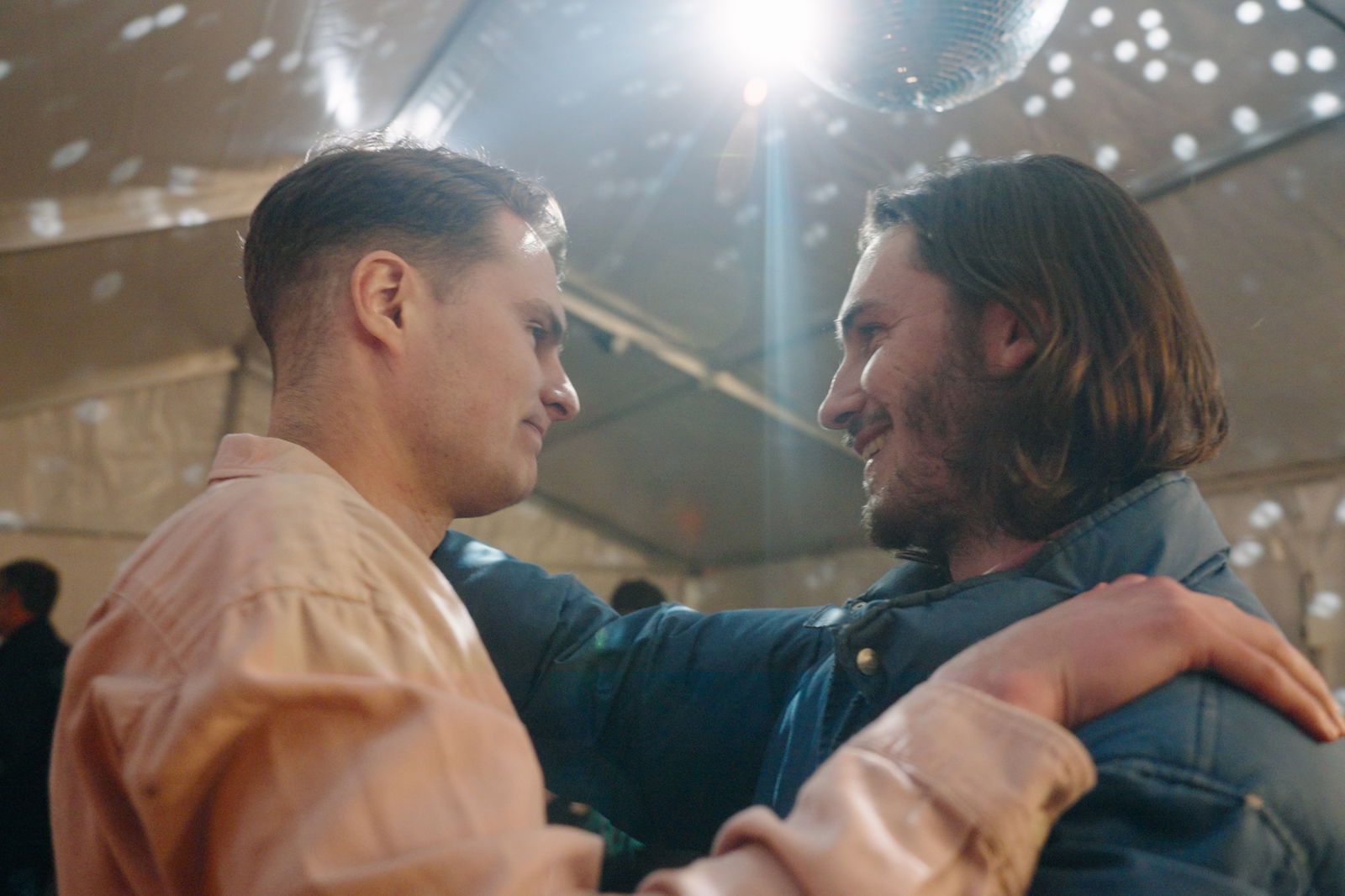



Written by Adam McIlroy.
18 minute read
Now that direct cremation is becoming ever more popular in the UK, people are becoming more curious about the cremation process. At the same time, it’s still common for people to encounter long-held myths about cremation—from how the process works to what happens with the ashes. This guide aims to clarify the facts and gently reassure you through each step.
In the following article, we want to set out the cremation process in detail, as well as answering basic questions about what happens at a cremation ceremony. That way, you can better understand the process of cremation.
Key takeaways:

At a cremation service, the body of a person who has passed is brought to a crematorium. With an Aura direct cremation, we will collect the person from their final resting place in a private ambulance before transporting them to one of our partnered care facilities.

If an unattended direct cremation is chosen for the funeral, there won’t be any mourners or guests present. However, an attendant at the crematorium will respectfully speak a few words before the person is committed to the cremator, along with their coffin.

If there are guests in attendance, then there may be a ceremony conducted by a funeral celebrant. The ceremony will usually feature a eulogy to the person who has died, as well as music special to them. Following the ceremony, they will be cremated.
Planning a cremation service can be different depending on your situation. Some choose to organise the details in advance using a prepaid funeral plan. This allows you to put your wishes in place and relieves some of the pressure on those you leave behind.
If you are organising a cremation service for someone who has already passed away, you may want to take a moment to consider what kind of cremation service is right for your circumstances. A direct cremation is often the simplest and most affordable option. It takes place without mourners present, allowing families the freedom to hold a separate memorial or celebration of life in their own time and way. An attended cremation, by contrast, includes a short ceremony at the crematorium where family and friends can gather to say goodbye.
Once you’ve decided on the right type of cremation, the next step is to choose a provider that feels right for you—one that aligns with your values, budget, and practical needs. Whether you want gentle guidance through an immediate loss or are planning ahead for the future, Aura is here to support you every step of the way.
If you’d like to know more about how to plan a cremation with Aura, our brochure is a helpful place to begin.
Our funeral plans are a helpful way to put everything in place for you or someone else.
When the time comes, our experienced team will be here to guide you through each step, offering support and advice whenever you need it.
To find out more about how our plans work, what’s included, and our story, you can request a brochure by clicking the link below. We will then send you a copy by email or First Class post—whichever you prefer.

There are a number of things that need to be carried out before a body is ready to be cremated. Firstly, depending on where the person has died, they may need to be urgently collected and brought to a mortuary, where they can rest safely.
Following that, a doctor or coroner will need to declare the death officially, with the Medical Examiner issuing the Medical Certificate of Cause of Death (MCCD), which states the cause of death clearly. Should the family want an open casket, they will need to make sure the body is embalmed so that it is suitable for viewing. Contrary to popular belief, however, embalming is not a legal requirement in the UK.
Medical devices, such as a pacemaker, will need to be removed, so that they don’t damage the cremator. And finally, the person who has died will be washed and dressed gently, so that they are ready. They will then be sealed inside their coffin, and brought to the crematorium for the cremation. A tracking ID tag is attached to the coffin and remains with it through each stage of the process.
When you buy an Aura funeral plan, our trusted partners will look after you on your way to your cremation. You will rest with dignity, and be respectfully prepared and cared for at one of our local care centres.
You should also know that Aura will not charge you for any of those extra matters: urgent-collection fees and device-removal fees are all included in the price of our plans.
We will now explain the cremation process in more detail, step-by-step, comparing it to the format of a traditional funeral so that you can better see the difference. Please remember that the experience will be different depending on whether or not mourners will be there.


When the necessary documents are in place, the person who has passed will be collected from their final resting place. At Aura we can collect from care homes, hospitals, houses or any non-mortuary facilities.
On the day of the cremation, the person will be moved from our care facilities. With a traditional funeral, the person who has passed is normally transported inside a hearse, often with some floral tributes. But with an Aura direct cremation, we transport the body in a private ambulance to the crematorium. It’s just as dignified, but the process is significantly more affordable.
The coffin will be placed upon the catafalque before the arrival of any mourners to the crematorium. This removes the need for the pallbearers that are part of traditional ceremonies. A catafalque is a framework that is designed to support the coffin, usually made of wood.
This approach takes the pressure off of the family to bring in the coffin themselves, which can be a overwhelming moment. It also makes the ceremony less formal which many people prefer.
The mourners will be directed to their seats by the celebrant, and music will be played as their loved ones arrive, which could be funeral hymns or some of the best funeral songs.
For an unattended funeral, the coffin will be brought directly into the crematorium from the private ambulance and placed on the catafalque, where an attendant will be waiting. The attendant will then say a few words as a mark of respect, before the coffin is taken to be cremated.

Attended
If you opt for an attended cremation service, it may be led by a celebrant who has been chosen by the family. They will have devised an order of service together that reflects the life of the person who has died. You can find a large network of independent celebrants here.
With Aura, there are two attended ceremonies to choose from. We have an intimate ceremony that is shorter (up to 10 minutes), designed for a few very close attendees (up to 15 people); and a longer option, lasting for up to 40 minutes for as many people as the crematorium can accommodate.
The celebrant’s eulogy will usually explain who the person who has died was, reflect on important milestones and relationships in their life, and make room for special anecdotes about them. It may also include poetry or prose readings that were significant to the person who has died, whatever the person would have wanted. The celebrant will make sure to work with the family beforehand in order to gather the information that they need.
There may also be music in the ceremony, which often has a moment set aside to hear a song or two that was dear to them.
Unattended
An unattended direct cremation won’t have an order of service or a celebrant, but, with Aura, the family can still choose music to play for their loved one before they are cremated. An attendant at the crematorium will then speak a few words out of respect, before beginning the cremation. There isn’t a formal committal for unattended direct cremations.
The ceremony concludes with the committal, which is a moment signifying the person’s passing from the world of the living into memory. It is the final moment for loved ones to say goodbye to them before they are cremated.
Normally, at this moment, the coffin will disappear behind a curtain. Depending on the crematorium, it may be possible to request that the curtain stays open. The committal is usually the moment when music is played, and there is an opportunity before the curtain is drawn for loved ones to lay effects on the coffin.
After the service, if there were any mourners present, they will have left the crematorium.
Some families like to organise a wake or celebration of life for the person who has died after the funeral. This could involve gathering together with loved one, listening to favourite music and sharing stories.
A direct cremation allows you to explore different ways to remember the life who has passed. Some ideas could be planting a memory tree, going to a favourite restaurant, or having loved ones round to bake together. There are many beautiful ways to honour the memory of someone who has passed away.


Depending on the preference of the person who has died or the family, our team can scatter the ashes at the crematorium’s Garden of Remembrance or return them to the family.
At Aura we hand deliver the ashes in a scatter tube within 21 days of the cremation taking place. This allows loved ones to decide if they want to spread the ashes somewhere important.
There are many ways to create personal tributes with a person’s ashes. For example, Aura’s founder, Paul, wants his ashes placed in a firework so that after he has passed he can light up the sky just like he lights up the lives of the people around him.
A direct cremation is a simple kind of funeral, usually without any mourners or most of the typical formalities associated with tradition, often referred to as cremation without a service.
Direct cremation is fast becoming a favourite option for people in the UK for three key reasons:
Put simply, direct cremation is a kind of funeral that provides an alternative for those who don’t feel comfortable with the traditional set up. There won’t be a hearse, pallbearers, a funeral procession or floral tributes. There doesn’t even need to be solemn music or black clothing, if that’s not what the person who has died wants.
In effect, it’s a funeral that provides the best of both worlds: It allows those who want to slip away unnoticed to do so. But it creates space that lets others bring more of their personality into proceedings too.
Another great benefit of direct cremation is that, due to the fact there is a lot less formality, they are normally significantly cheaper than a traditional funeral. We are glad to say that our direct cremation plans start at less than half of the average cost of a funeral in the UK according to SunLife, which they put at £4,285.

Now that we have explained how the cremation process works, we will answer some common, more general questions that people tend to have about cremation.
A cremation takes place at a crematorium and may be attended by family and friends or carried out as a direct (unattended) cremation. At an attended service, the coffin is placed in the chapel for a ceremony with music, readings, or tributes before the cremation begins. In a direct cremation, no service or mourners are present. The cremation itself takes one to three hours, after which the ashes are either returned to the family, usually within 21 days, or scattered in the crematorium’s Garden of Remembrance.
A crematorium is a place where the cremation of the dead can be performed. A crematorium will have at least one purpose-built ‘cremator’ (otherwise known as a crematory, retort, or a cremation chamber) which is used to cremate the bodies of those who’ve died.
Beyond that, crematoria also normally have a ceremonial space where funerals can be conducted, allowing a funeral and cremation for the same person to be conducted on the same site.
Depending on where the person who has died has passed away (i.e., if it’s not in hospital or a nursing home), they will need to be urgently brought somewhere that has mortuary facilities. That is so that they can rest with dignity in a place that has adequate temperature-regulation measures.
Embalming can temporarily halt the decomposition of the body, which allows for a little more time if the family would like to visit their loved one in the Chapel of Rest. However it’s important to remember that a body cannot be immediately cremated after death, as certain paperwork is required before it is legally possible. Different beliefs on death and funerals in religion also require funerals to be organised more quickly.
There are various pieces of paperwork that you will need before a cremation can be organised. One of the first things you will need to do when someone dies is to register the death. The Medical Examiner issues the MCCD, which allows you to schedule a death registration appointment with the Registrar.
At this meeting, you will be given a Death Certificate. You might need multiple copies for different admin purposes, which you can request, but there will be a fee each time. The registrar will also give you a certificate for burial or cremation, which states that a burial or cremation can now legally go ahead for the person who has died. If you select cremation vs burial, you will also have cremation forms to fill in.
Before a body is cremated, the crematorium attendants take care to remove jewellery from the person who has died so that their family can have it back for sentimental reasons. However, sometimes the family prefers it to remain with the person who has died.
They also make sure to remove medical devices and pacemakers in advance because there is a risk that they can explode and damage the cremator or injure staff during the cremation. Medical devices can be recycled, but they can also be returned to the family.
Often called ‘grave goods’, it’s natural for people to want to include mementos in the coffins of loved ones. It’s something that can comfort the giver in grief. And, for sentimental reasons, it can also feel good to know that those we’ve recently lost will have something of ours for themselves, too. This is a part of the history of cremation and has been done since ancient times.
However, it’s important to remember that sentimental items, for instance a wedding ring, or a special piece of jewellery, will be consumed in the process of cremation. That means that you can’t get it back after.
Certain items are not allowed to be cremated with the person. For instance, anything flammable, such as alcohol, can’t be included, as it can damage the cremator. Certain types of clothing made from things like treated leather, latex and vinyl are also not crematable, as they lead to toxic and very polluting fumes when they are burned.
It takes between one and three hours for a body to be fully cremated and reduced to ash. The size of the body, as well as the type of cremator used will impact the cremation time.
Bodies are never cremated together unless specifically requested. For instance, a mother and child, or twins could be cremated together, and have their ashes combined. But two strangers will never be cremated together.
Aura, within 21 days of completing the cremation, will do one of two things with the ashes of the person who has died. We can either hand-deliver the ashes to the family, so that they can either be used for any cremation ashes ideas at a time and place of their choosing. Or they can be scattered in the crematorium’s own garden of remembrance – whatever is preferred by the family or the person who has died themselves.
The Federation of Burial & Cremation Authorities (FBCA) was founded at Wembley in 1924. It’s an organisation that devised a code of conduct for burial and cremation activities. It represents 85% of all burial and cremation authorities in the UK.
Its Code of Cremation Practice is voluntary. It aims to shape behaviour and practises surrounding the attitude and approach to cremation arrangement by those who work in the industry. It covers things like hiring practices; conduct; correct identification; and attention to the ashes.
There is also the National Association of Funeral Directors (NAFD). It’s an organisation that helps its members to drive higher standards of care of those who have died. It also offers objective advice to members of the public on how to choose the right funeral for them.
Aura’s cremation costs vary depending on whether you are looking for a funeral in the here and now, or whether you are planning one for the future. Cremation arrangements can be made at the point of need from £1,195, whereas our funeral plans start at £1,695.
Aura’s cremation prices are less than half of the price of the average funeral in the UK, according to SunLife, which is a fact that makes us proud. We know how much of a difference this can make to families who are struggling to pay the high prices of funerals.
Organising a funeral is one those things we tend not to think about until we have to, and we often have worries and concerns about the practice. We hope these have now been eased by what you have read.
If you need any help arranging a cremation, our team is here to help. Aura is the top-rated nation ‘Cremation Services’ provider on Trustpilot, with a score of 4.9/5 stars. We have earned this recognition from families through our uniquely compassionate handling of the cremation process.
Our dedicated Aura Angel team are experts in their field, and they will be there to guide your family through the difficulty of funeral arranging when the time comes. They can help with logistical and admin matters, and they can even lend a listening ear if you simply want to explain what you’re going through.




If you have any questions, would like a brochure or simply would like a chat through our services, our award-winning team is here to help.
Unlike other providers, we won’t hassle you with constant calls. We’ll simply ensure you have the information you need and leave you to come to a decision in your own time. When you’re ready for us, our team will be ready to help.